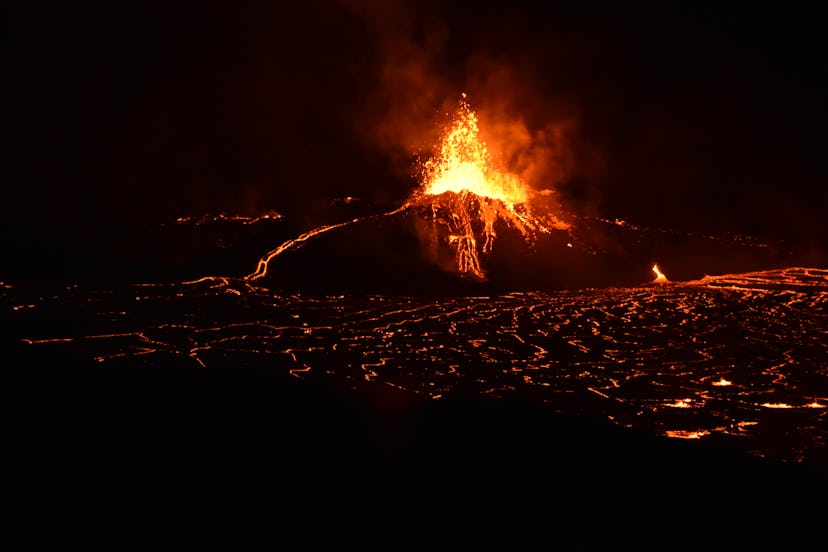Visitors Flock to See the Ongoing Eruption At Kīlauea National Park
The active volcano has been erupting for over a year now — and the spectacular sight continues to draw tourists.

On September 29, 2021, the Kīlauea volcano began erupting — and it’s been going ever since. In the more than year of lava flowing out of the vent and into the Halema’uma’u crater, tourists have flocked to Hawaii to Kīlauea National Park, hoping to see these fire mountains with their own eyes.
According to Jessica Ferracane, a Hawaii Volcanoes National Park spokesperson, the volcano has brought in more than 1.5 million visitors since this eruption began, per West Hawaii Today. “The first eight months of 2022 [brought] a 42% increase in visitors over the same months in 2021.
The reason for the draw is obvious. While this active volcano is no Mount Vesuvius with the tell-tale dome spout and explosive lava and smoke pouring out the plume, there is lava — and lots of it. Think, a lava-filled lake slowly flowing out to fill a huge crater at two to four cubic meters per second.
“The current eruption at Kīlauea volcano, within Halema’uma’u crater, has generated an immense lava lake,” the National Park explains on its website. “Lava is currently visible from many areas and overlooks surrounding Kaluapele (Kīlauea caldera) within the national park.”
No wonder people are making the trek to see this far-flung National Park. And you still have time to join them. The eruption has lasted as long as it has, with no signs it’s going to slow down any time soon. According to Mike Zoeller, geologist with the Hawaiian Volcano Observatory who spoke with West Hawaii Today, there’s only a working scientific theory for why the volcano is lasting as long as it is.
“Our best explanation for why this one has lasted longer is that this surface vent has a better, more efficient connection with the magma reservoir,” Zoeller says. “As to why that is, we’re not sure.” He went on to say that with the long-lasting eruption, they’ve recorded some minor earthquakes and slight changes in ground movement.
To get to the Kīlauea National Park, book a flight to Kona International and follow the National Park instructions to visit. And if you can’t make it in person, the National Park Service has plenty of active webcams for you and the kids to fire up from the comfort of your lava-free living room.
This article was originally published on